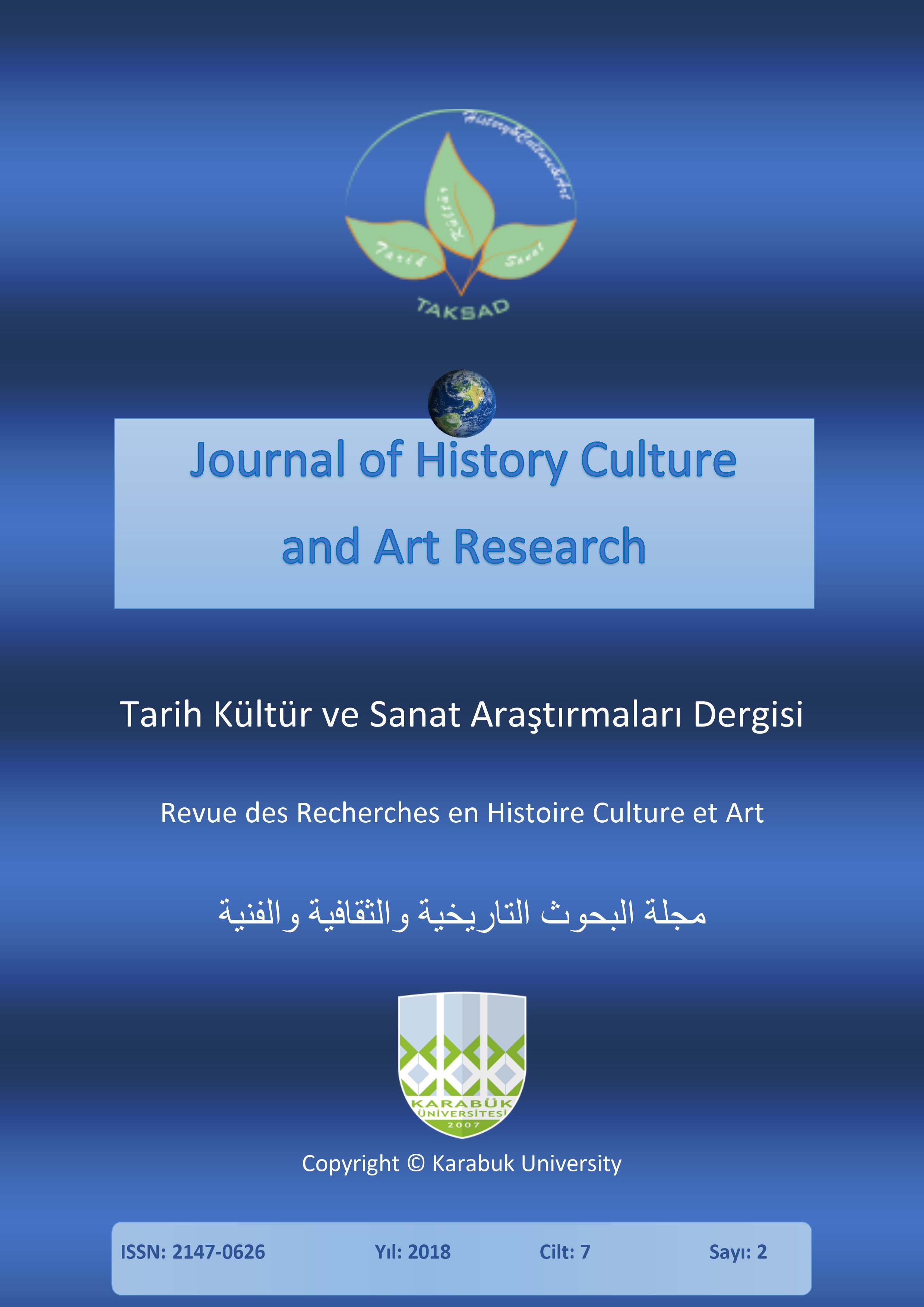Body Performance Analysis in Interactive Art Based on Maurice Merleau-Ponty’s Views
DOI:
https://doi.org/10.7596/taksad.v7i2.1513Keywords:
Body, Interactive art, Modern art, Artwork, Maurice Merleau-Ponty.Abstract
Maurice Merleau-Ponty is a famous phenomenologist of the twentieth century. Being influenced by Husserl, Merleau-Ponty paid attention to sensory perception and the body topic by rejecting empirical and rational philosophical theories. Merleau-Ponty's philosophy is around the subject that perception is a physical phenomenon, not a mental event. New artistic media provide an opportunity for audience engagement and experience, and since the experience is always body dependent, body is considered an integral part of the modern media. The purpose of this research is to understand the interaction of audience regarding interactive art effects, relying on Merleau-Ponty's views. The main research question: What are the commonalities of Merleau-Ponty's body performance theory in the process of perceiving artwork and interactive art elements? This research is fundamental in terms of purpose and descriptive-analytic in terms of nature with an adaptive approach and library research is used for information collecting. The research results showed that comparing Merleau-Ponty's views and the interactive art elements, there are commonalities such as sensory perception, audience acting, globalism (Gestalt), interconnectedness and pre-reflective perception. Based on these common features, the new art media, including interactive art, can be analyzed.
References
Asghari, Mohammad (2015). Merleau-Ponty’s phenomenological approach to the relationship between art and body. Journal of Art Research, Isfahan University of Art, 5(10), 1-10
Basiri, Mehrangiz (2013). Body and Sensation in the New Artistic Media: A Look from the Phenomenological Perspective of Maurice Merleau-Ponty. Kimia Art, 2(9), 45-52.
Broadhurst, Sue (2012). Merleau-Ponty and neuroaesthetics: two approaches to performance and technology. Digital Creativity, 23(3-4), 225-238.
Carman, Taylor (2011). Merleau-Ponty, Translation by Massoud Oliya. Tehran: Qoqnus Publishing.
Descartes, Rene (1996). Meditations on First Philosophy: With Selections from the Objections and Replies. Cambridge University Press
Ghaderi, Erfan & Marasy, Mohsen (2014). Research in defining a variety of interactive arts. The World Media Magazine, 9(1), 194-229.
Gholami, Tahereh (2013). Cézanne and Merleau-Ponty. Kimia Art, 2(6), 51-62.
Gilmour, Jonathan (2009). Merleau-Ponty praises philosophy, Translation by Hayaniyah Yaseri. Tehran: Qoqnus Publications
Matthius, Eric (1997). Reviewing Merleau-Ponty’s thoughts. Translation by Ramadan Barkhordari. Tehran: Gam-be-gam Publishing
Merleau-Ponty, Maurice (1962). Phenomenology of Perception. London: Routledge
Merleau-Ponty, Maurice (2004). The World of Perception. London and New York: Routledge
Mesbah, Gita & Rahbarnia, Zahra (2011). Time continuum - Bakhtin's place in a new interaction (comparative study of two cultural examples). Comparative studies of art, 1(1), 1-16.
Paul, C. (2003). Digital Art. London: Thames & Hudson.
Piraew, Vank (2010). The phenomenon of Merleau-Ponty. Abadan: Porsesh Publishing
Rush, Michael (2007). New artistic media in the twentieth century. Translation by Bita Roshan. Tehran: Nazer Publications.
Muller, L.; Edmonds, E. & Connell, M. (2006). Living Laboratories for Interactive Art. Co Design: International Journal of Co Creation in Design and the Arts, Special Issue on Interactive Art Collaboration, 2(4), 195-207.
Rahbarnia, Zahra & Kheiri, Maryam (2013). Interactive art as a text pointing to one of the interactive works featured in the 2011 Biennale work by Norma Jane. World Media Magazine, 8(15), 92-113.
Rahbarnia, Zahra & Masdari, Fatemeh (2015). The Effect of New Media on the Interaction of New Art with the Approach to the Theory of Art in the Open Age of Mechanical Production. World Media Magazine, 10(20), 221-235.
Sayyad, Alireza & Gil Amir Rud, Nahid (2016). Inclusive education, using the Merleau-Ponty’s theory of perception in art education. Journal of Art Research, Isfahan University of Art, 6(11), 1-9.
Sebti, Safa; Rahbarnia, Zahra & Khabazikenari, Mehdi (2016). Merleau-Ponty’s Philosophical Concepts: A Bedouin for Analyzing Interactive Art, A Look at the work of Cultivation of the Garden. Kimia Art, 5(19), 43-55.
Taleb Zadeh, Seyed Hamid (2006). Sensory perception in the phenomenology of Merleau-Ponty. Philosophy Magazine, 34(12), 63-72.
Rezvani, Faezeh (2016). Investigating the Concept of Humor in the Merleau-Ponty Phenomenology, and the Art of Execution with the Case Study of Valie Export. University of Art, Faculty of Theoretical Sciences.
Downloads
Published
How to Cite
Issue
Section
License
All papers licensed under Creative Commons 4.0 CC-BY.- Share — copy and redistribute the material in any medium or format
- Adapt — remix, transform, and build upon the material for any purpose, even commercially.
Under the following terms:
Attribution — You must give appropriate credit, provide a link to the license, and indicate if changes were made. You may do so in any reasonable manner, but not in any way that suggests the licensor endorses you or your use.
- No additional restrictions — You may not apply legal terms or technological measures that legally restrict others from doing anything the license permits.







